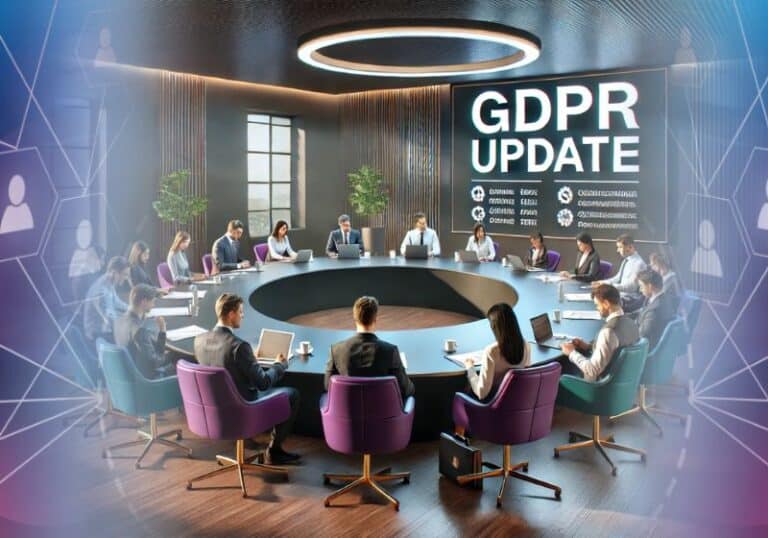Note-Taking in Grievance & Disciplinary Hearings

Imagine it’s 2027 and you’re called to an employment tribunal about a staff disciplinary meeting that happened back in 2024. Can you remember exactly what was said in that hearing? Who promised what, or how an employee responded to a critical question?
For many businesses, this scenario isn’t far-fetched – the backlog of employment tribunal cases has swollen to nearly 50,000, and some hearings are now being scheduled as far ahead as 2027 or even 2028. With such delays, memories naturally fade and key staff might no longer be around to testify.
This is why detailed note‑taking during grievance, disciplinary, and appeal hearings is more important than ever (and especially with the teeth that will come with the Employment Rights Bill when it is enacted).
Why Detailed Note-Taking Matters (Especially Now)
In any grievance or disciplinary process, taking careful notes might feel tedious in the moment – but those notes could become your lifeline years later. The reason is simple: memories are unreliable over long periods. Psychological studies have long shown that human memory deteriorates with time; details get lost or distorted. Courts and tribunals know this, and they generally give more weight to notes written at the time rather than someone’s recollection years afterward. In other words, if it’s not written down, it may as well not have happened as far as a tribunal is concerned.
Now consider the current climate: employment disputes are taking years to resolve. By the time a tribunal hearing arrives, the managers involved might have changed jobs or simply forgotten fine details. An accurate written record from the original hearing can make all the difference. It provides a snapshot of what was discussed, serving as an anchor to the truth. Good notes let a third party – like a tribunal or an appeal manager – understand what the issues and evidence were at the time. They can prevent “he said, she said” scenarios by clearly documenting who said what.
On a practical level, maintaining thorough notes is also about fairness and good practice. Acas Code of Practice – the guideline for handling disciplinary and grievances – advises employers to keep a written record of all disciplinary and grievance cases, including notes of any formal meetings. Those records should then be shared with the employee involved, so everyone has a clear and agreed account of the proceedings. If an issue proceeds to appeal or even tribunal, having that agreed set of notes means you won’t be scrambling to piece together events from memory. In fact, failing to keep and share such records can undermine your credibility. An employer who can’t produce notes of a meeting may find a tribunal is forced to rely on witness testimony – and tribunals tend to side with the employee’s version when the employer has no solid documentation to back up its decisions. In contrast, if you document the content of hearings correctly and accurately, you’re showing that your process was transparent and fair from the start.
Finally, detailed notes protect you in case people involved in the hearing are unavailable later. Staff turnover is a fact of business life. By 2027, the manager who conducted a 2024 hearing might have left the company. But if their meeting notes are on file, those can serve as evidence regardless of the person’s absence. Good record-keeping is therefore not just a bureaucratic exercise – it’s an insurance policy that preserves the truth of what happened.
Embracing Technology: AI Transcription Tools for Note‑Taking
The good news is that you don’t have to rely on scribbling furiously or trying to type every word during a hearing. Modern AI transcription tools can assist with capturing discussions in incredible detail. These tools are like having a virtual stenographer in the room, allowing you to focus more on the conversation and less on writing things down.
How can AI tools help? First, they can produce an almost verbatim transcript of the meeting. This means nothing said is missed or forgotten – a huge relief if you’re not a fast note-taker.
You’re free to listen actively to the employee and ask the right follow-up questions, knowing the dialogue is being recorded for you. The transcripts are also searchable – if weeks or months later you need to find what was said about “performance targets” or a specific date, you can simply search the text instead of flipping through handwritten notes.
The Human Touch: Reviewing and Contextualising AI Notes
With all these advantages, AI transcription might sound like a magic solution – and it nearly is – but human oversight is still absolutely essential. No automated tool is 100% perfect. For one, AI can mishear or mis-transcribe words, especially in less-than-ideal conditions. If people talk over each other, or someone has a very strong accent or uses technical jargon, the software might struggle.
Therefore, always plan to review and edit the AI-generated notes soon after the meeting. Think of the transcript as a first draft. Go through it while the discussion is still fresh in your mind and correct any obvious mistakes. Fill in any words that the software marked as unclear. It’s also wise to add context or clarifications in the reviewed notes – essentially annotations that an AI wouldn’t know to include. For instance, if during the disciplinary hearing the employee became emotional, or a particular point led to a heated exchange, a transcript will only show the words spoken. You might add a bracketed note like “[employee was visibly upset at this point]” or “[voices raised during this exchange]”. This can be important later to convey tone and atmosphere. In fact, one downside of full transcripts is they don’t capture tone or body language, and transcripts can even lead to debates about how something was said rather than what was said. By adding a bit of narrative description in your notes (e.g. noting sarcasm or emotion), you preserve context that would otherwise be lost.
It’s also important to summarise key decisions or agreements at the end of your notes. AI will give you the raw dialogue, but a human touch is needed to draw out the conclusions. After reviewing the transcript, add a short section such as: “Summary of Outcome/Next Steps: Employee agreed to attend training; manager to provide written warning (to be issued within 2 days); appeal rights explained,” etc. This makes it easy for anyone (including you, months later) to see the result of the meeting at a glance. It doesn’t take long to add, and it ensures the notes are not just a wall of text but a useful record.
When using AI tools, confidentiality and accuracy checks are part of human oversight too. If your meeting involves sensitive personal data, ensure the transcription service is secure and compliant (for example, some tools offer GDPR-compliant processing – something worth checking if you’re uploading recordings). After transcribing, double-check that the transcript file is stored in a confidential manner – likely alongside the employee’s case file or personnel file, with appropriate access controls. Technology can assist you, but responsibility for the data still lies with you as the manager or business owner.
Strong Records = Strong Protection
Maintaining detailed notes of grievance, disciplinary, and appeal hearings might not be the most glamorous part of management, but it is absolutely a cornerstone of good practice. Think of note-taking as protecting your business and ensuring fairness at the same time. On one hand, you’re creating an audit trail that can defend your decisions if they’re later questioned. On the other, you’re showing the employee that you have nothing to hide and that their case is being handled transparently. If a dispute escalates, an employment judge will look to see if you followed fair procedure. Having proper notes of each meeting is a strong signal that you took the process seriously. It can also directly impact the outcome: a tribunal is far more likely to trust a well-documented process over conflicting oral accounts.
It’s also worth noting that good note-taking can sometimes prevent disputes from escalating in the first place. When an employee knows that everything said is being recorded accurately, they are less likely to later claim “I never got a chance to explain myself” or “my point was ignored.” You can point to the notes and show them that their input was captured and considered. In appeals, clear notes from the initial hearing allow the next manager to properly review what happened, making the appeal process more effective and fair.
In summary, accurate and thorough note taking is a vital part of any grievance or disciplinary process, helping to ensure transparency, consistency, and legal compliance. If you or your team need support with this, we have clear and easy-to-use note-taking templates available to help guide you through the process. Just give us a call on 01455 444222 option 1—we’re here to help
In the world of HR and employment law, a few pages of notes today can make all the difference in securing a fair, defensible outcome for your business tomorrow.
Angela Clay
A qualified employment law solicitor and our managing director, Angela has unparalleled legal expertise and decades of experience and knowledge to draw from. She’s a passionate speaker and writer that loves to keep employers updated with upcoming changes to legislation, and is a regular guest speaker on BBC Leicester Radio.




